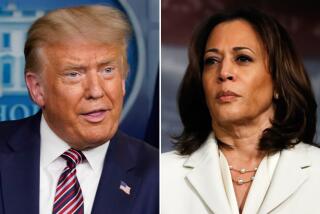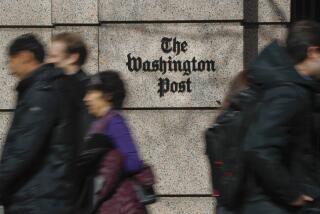New York Times to Add Ombudsman to Its Staff
- Share via
NEW YORK — The New York Times, seeking to heal the damage caused by the Jayson Blair reporting scandal, announced Wednesday that it would hire a public editor, or ombudsman, to address readers’ concerns and criticisms, and periodically write independent commentaries evaluating the newspaper’s performance.
On newly appointed Executive Editor Bill Keller’s first day on the job, the paper released a detailed report by a 28-member panel -- including three outside journalists -- that recommended creation of the new post and other improvements in how the paper produces stories and supervises employees.
Although the newspaper has previously resisted hiring an ombudsman, Keller agreed with the panel’s recommendation that the paper “can profit from the scrutiny of an independent reader representative.”
The public editor, whom Keller said would be appointed in the next few weeks, will have responsibilities similar to ombudsmen at about three dozen other American newspapers. At the Los Angeles Times, a readers’ representative responds to public concerns and criticism of coverage, and also helps ensure that corrections are published in a timely manner.
The New York Times was rocked by disclosures earlier this year that Blair, 27, had fabricated or plagiarized dozens of stories. While the paper subsequently published a detailed account of his transgressions, the scandal created a crisis of credibility that led to the resignations last month of Executive Editor Howell Raines and Managing Editor Gerald Boyd.
One question dominated: How could Blair, an inexperienced young reporter, have gotten away with devious, error-ridden work for so long at a paper that prided itself on journalistic excellence? In its 58-page report, the internal committee headed by Assistant Managing Editor Allan Siegal blamed the debacle largely on a failure of communication among editors who did not respond to a series of warning signs about Blair’s work.
The panel’s three outside journalists -- Louis D. Boccardi, former president and chief executive of Associated Press; Roger Wilkins, professor of history and American culture at George Mason University and a former New York Times columnist; and Joann Byrd, former editorial page editor of the Seattle Post-Intelligencer -- wrote a separate chapter that criticized the Times’ newsroom culture and management style. They added, however, that “no single person, no single mistake, no single policy is responsible for the embarrassment of plagiarism and fiction that stained the journalism of The New York Times in the spring of 2003.”
The report, which featured interviews with scores of reporters and editors, including Raines and Boyd, concluded that Blair rose through the ranks to the national staff in part because of “a climate of isolation, intimidation, favoritism and unrelenting pressure.”
“We are determined to correct that,” the report continued.
The Siegal committee rejected criticism that the newspaper’s commitment to diversity in hiring was a cause of the scandal surrounding Blair, who is African American. “That charge ... is wrong,” Keller said. “The fraud Jayson Blair committed on us and our readers was not a consequence of our diversity program, which has been designed to apply the same rigorous standards of performance we demand of all our staff. The problem is, in the Blair case, we failed to measure up to those standards at numerous steps along the way.”
In addition to designating a public editor, the paper also announced that it would be hiring new senior-level editors to monitor internal standards and to supervise hiring and promotions. Keller said the ombudsman, who is to be named by the early fall, would be hired on a one-year contract and would report directly to him.
More to Read
Sign up for Essential California
The most important California stories and recommendations in your inbox every morning.
You may occasionally receive promotional content from the Los Angeles Times.













